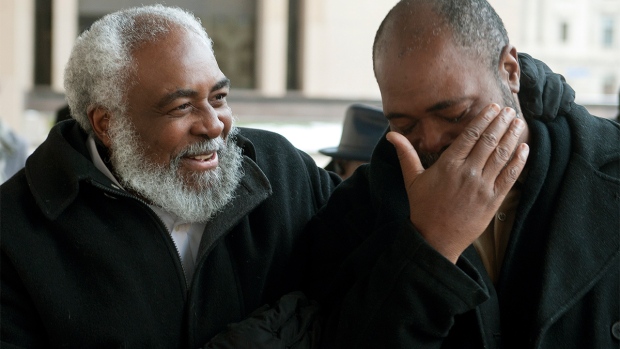Recently, two Cleveland men who had been wrongly imprisoned for more than 30 years were freed when a key witness against them recanted his earlier testimony.
News accounts of the story emphasized the decades the men were imprisoned for the crime they didn’t commit. But when I heard more details of the story, I was struck by the fact that they had originally been sentenced to death. Only a decision by the U.S. Supreme Court in 1978 that declared Ohio’s then-capital punishment statute unconstitutional saved their lives.
Of course, in 1981 Ohio passed a revised death-penalty law and has conducted executions sporadically ever since.
The story of the two released men – and of a third man who was convicted with them but had been paroled after serving a mere 28 years – was told by author Kyle Swenson in his book, Good Kids, Bad City.
In the book, Swenson writes that before investigating this case, he had always assumed that the criminal justice system had safeguards or guardrails to prevent innocent persons from being sentenced to death. I suspect that many Americans believe that as well.
Unfortunately, they are not correct.
The American criminal justice system works largely as designed. But few people understand what it was actually designed for. And it can’t stop a wrongfully-convicted person from being executed.
Actually, to say our system was ‘designed’ at all is something of a misnomer. The criminal justice system that we use – more accurately, the systems, as each state writes its own rules of criminal procedure – has evolved over many centuries. The rules and procedures we use today have been cobbled together from disparate parts, leftover theories, good ideas, rampant prejudices, and lofty assumptions over a period of 400 years. The oldest parts of our criminal justice system predate the United States Constitution by centuries.
So, what is the purpose of our criminal justice system? Discover truth? Dispense justice?
Unsurprisingly, no.
The overriding purpose of our system is to reach a decision, hopefully while protecting the rights of the accused. We need a way to decide how to handle allegations of criminal conduct and we want a system that minimizes the possibility that innocent people are convicted.
If the purpose of the system was to understand what really happened – to discover the truth – our rules would be a lot different. First, there’d be no such thing as inadmissible evidence. Any information or evidence that could help determine the truth of an allegation would obviously be allowed.
Also, we wouldn’t have an adversary system. If we wanted truth, we’d have a system where the state, the victim, and the defendant worked together to find out what really happened. We wouldn’t use a system where each side has an incentive to obscure the truth and discredit certain information.
So, our system does work. There are no ties. Every case is ultimately decided, one way or another. But truth, justice, and even fairness are not part of the deal.
Which brings us to the death penalty, an irrevocable act that ought to be taken very seriously. There is no argument in favor of the death penalty that can overcome the fact that our criminal justice system is neither intended to nor is capable of discovering the truth. The question then becomes, how many innocent people are we willing to kill to preserve a punishment whose deterrent effects are unclear?

See also: Does the Death Penalty Deter Crime?

April 5, 2019